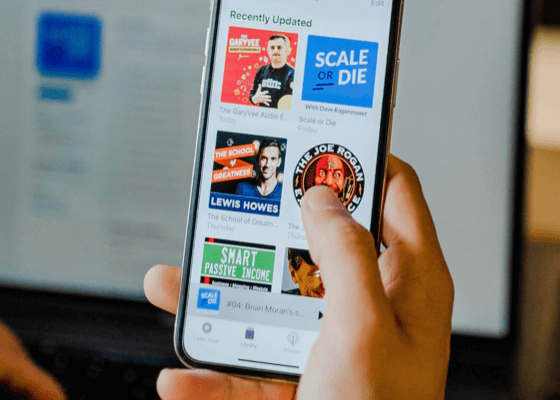7.75 Ways to Reduce Refunds
No one likes refunds.
You don’t like them because they’re a hassle and they (seemingly) cut into your profits.
Your payment processor doesn’t like them because it makes them nervous. While not nearly as bad as chargebacks, too many refunds can still raise a red flag and cause your processor to wonder if you might be a bad risk.
Your customer doesn’t like them because it means they’re unhappy. Or… they simply wanted to get ahold of your info product and not pay for it. But that’s another story.
Here are 7.75 ways to reduce your refunds:
1: Lengthen your return period.
It might seem counter-intuitive to offer a longer return period, but studies show it can actually reduce refunds.
Let’s say that right now you offer a 30 day guarantee. This gives your customer a sense of urgency and pressures them into initiating a return faster.
But if you lengthen your return window to 45 to 90 days, you trigger what researchers call an endowment effect.
The longer a customer has a product, the more of an attachment they form with it, which means they are less likely to return it.
And, because customers tend to wait until the last moment to return an item, extending the guarantee period also means they are more likely to forget to initiate the return.
In addition, a well-crafted and value added return policy can boost sales and reduce cart abandonment.
Prospects are more likely to take the plunge and buy your product if they feel safe and secure doing so, and a liberal return policy does just that.
2: Include a welcome letter.
You used a sales device (video, sales letter, etc.) to sell them on buying the product. Now you’re going to sell them again on what a great decision they made.
Buyer’s remorse is a powerful thing, but you can head it off with a carefully crafted letter that reminds them of the biggest benefits they’re about to enjoy with your product, as well as what a great deal they got, and how this is going to help them to achieve their goals.
You might also include additional information and resources (such as a gift) or just generally build up their excitement level to fever pitch.
A gift might be as simple as, “Because you are one of the elite cyclists who took advantage of this once in a lifetime offer, we’ve included a free gift as our way of saying thank you, and to welcome you into our tight-knit group of world class cyclists. Simply go to WorldSavageCycle.com/freegift to claim it.”
The idea is to make your customer feel that you are overdelivering on value, which hopefully, you are.
3: Get them off to a fast start.
If you’re selling a large information product, add a Quickstart Video or Guide to get the customer oriented and started in the right direction.
You’re letting them know where to begin, and you’re helping them to consume the material more easily.
Remember, if your customer feels overwhelmed or they think there isn’t enough time to figure all this ‘stuff’ out, they may give up and decide it’s just not for them.
But if they get a result quickly – even a small result – then they’ve got the positive feedback that tells them they can be successful at this.
4: Send out bonuses over time.
Let them know before and after the sale that they are going to be receiving some extraordinarily valuable bonuses over the coming weeks.
Before sending each bonus, send out a teaser that tells them to be on the lookout for the bonus. Often the anticipation is just as important as the bonus itself, so really heighten the suspense and get them excited for what’s coming.
Then send out the bonuses periodically – perhaps once or twice per week. Keep the bonuses coming for a period of time longer than your guarantee.
For example, if you have a 60 day guarantee, offer 10 bonuses, one per week. These could be 10 videos from another course on how to do something, or they could actually be 10 separate bonuses.
If the bonuses are all stand alone products (and not split up over several weeks) then be sure that the very best bonuses are given out LAST. This can greatly reduce refunds, since people are looking forward to receiving that BIG bonus and they know they will miss it if they refund.
You can also send out just one large bonus after the refund period if you like, but I prefer to send a chain of them.
This way my new customers become accustomed to opening and reading all of my emails, because they are watching out for the next bonus, and the next, and the next and so forth.
- Call them on the phone and thank them.
Yes, you read that right. If you’re selling big ticket items, or even small ticket items and you want to give unbelievable service, CALL your customer and thank them personally for their purchase.
Welcome them into the fold and be prepared for their amazement. Nearly no one online CALLS their customers to say thank you. You’re going to stand out and apart from your competitors like never before. Your customer is now going to REMEMBER you as “That guy (or gal) who actually CALLED me on the phone to say THANK YOU!”
They’ll read your emails like they know you, because they feel like they do know you. They’ll feel connected to you in a way they don’t feel connected to any other marketer in your niche.
And they’ll be a whole lot more likely to promote you on social media and buy more products from you.
Plus, they’ll also be far less likely to refund the product they just bought from you.
- Create an autoresponder welcome series.
Make a 7 day or even 30 day follow up email campaign for your customers that:
- Reassures them they made a good decision by purchasing your product
- Gets them excited to dive into your product and get started, because people who use your product are far less likely to refund
- Gives them some additional tips for using the product
- Asks them for a testimonial (nicely, of course, don’t be pushy) and maybe even encourages them to refer a friend
- Upsells them to the next product or the next level
- Add live calls to the product.
If you’re selling a product for top dollar, you need to give your customers the chance to interact with you and ask you questions.
By adding training calls, coaching calls or question and answer calls, you can charge the higher prices while reducing your refund rate.
One great thing to do is hold people accountable as they go through the program. For example, to keep up with the calls, they need to keep progressing through the program.
Call one covers the first two modules and answers any questions about those modules. Call two covers the next two modules, and so forth.
And people just want a chance to interact with you.
As the product creator, you’re like an author. People want to be able to say they not only read your book or took your course, but they also spoke with you, too.
One more thing: Any time you get a chance to compliment a customer on one of your calls, do it. That person will be your customer for life, and the other customers will try that much harder to get recognized by you, as well.
7.5 Reverse refund requests.
The first 7 methods are all about preventing refunds. This method – one I don’t see talked about very much – is something you can do after you’ve received a refund request.
Reach out to the person asking for the refund and let them know you’d be happy to process that for them.
Just one thing before you do… you realize that perhaps this wasn’t the right product for them. It happens.
And so, you’d like a chance to make it right and keep them as a customer, because you want them to be happy.
Which is why you’re offering them ____. And you fill in the blank.
It could be their choice of any of your other courses, for example, or even some personal one-on-one help.
If they want the benefit your product offers (and clearly they do, since they made the purchase) but they’re struggling to get results, sometimes they just need a little guidance to reach success and save your sale.
If you can offer your customers something of even greater benefit when they refund, not all will take you up on your offer, but I’ve found that many of them will.
The key is to be super polite and respectful and try to find a positive solution for both of you.
If they still insist on a refund, then process it quickly, and thank them for their consideration.
7:75 Reduce the price.
If you ask your customer why s/he wants a refund, and the answer is that your product or service costs too much, ask them how much they are willing to pay.
If you can live with the answer they give you, then offer to let them keep it at that price, and just refund the difference.
The better you are at reducing refunds, the happier your payment processor will be, preventing any sudden surprises of being limited on your accounts.

















